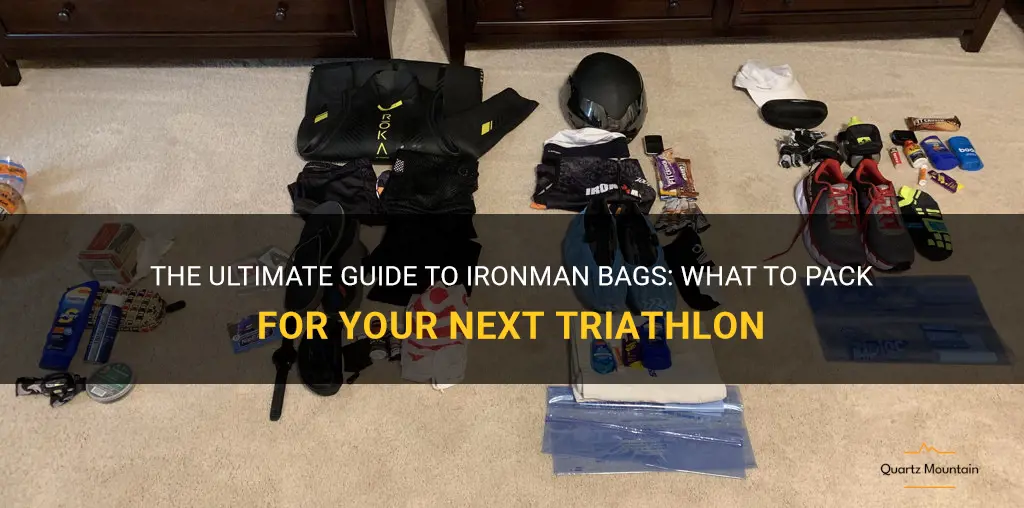
Are you a triathlete preparing for your next Ironman race? One of the most crucial aspects of successfully completing an Ironman is being well-prepared with the right gear. And that starts with packing the perfect Ironman bag. But what exactly should you include to ensure you have everything you need on race day? Don't worry, we've got you covered with the ultimate guide to Ironman bags. From swim gear to nutrition, we'll walk you through everything you need to pack for your next triathlon adventure. So, grab your bag and let's dive into the essentials you can't afford to forget.
What You'll Learn
- What are the essential items to pack in an Ironman bag for race day?
- How should I pack my nutrition and hydration supplies in my Ironman bag?
- Are there any specific clothing items or gear that I should include in my Ironman bag?
- What should I include in a first aid kit for an Ironman race?
- Are there any additional items or tips for packing an Ironman bag that could be helpful for race day preparation?

What are the essential items to pack in an Ironman bag for race day?
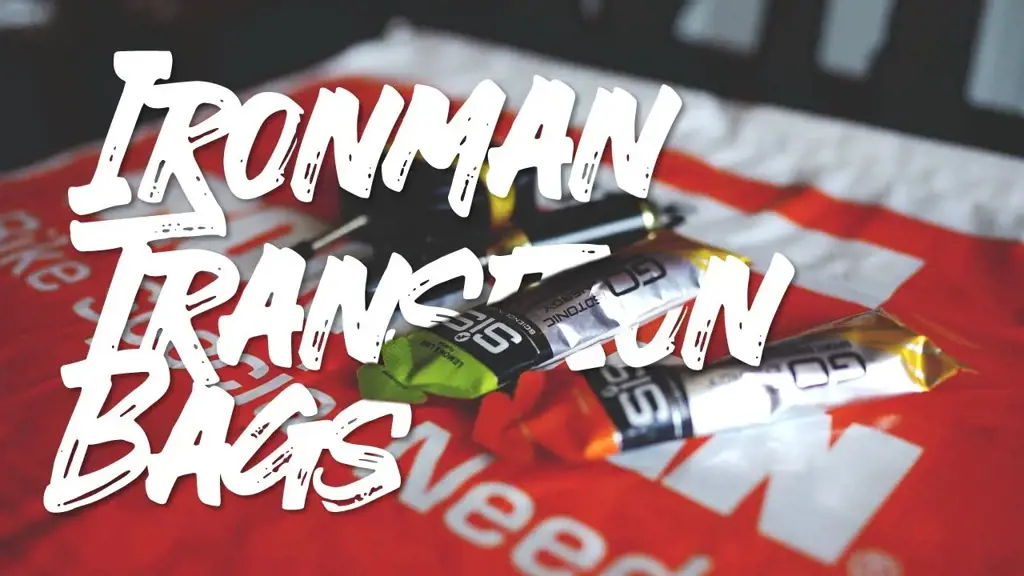
Preparing for an Ironman race requires careful consideration of what essential items to pack in your race day bag. With the intensity and duration of the race, being well-prepared can make a significant difference in your performance and overall experience. Whether you're a seasoned triathlete or a first-timer, here are some key items you should include in your Ironman bag.
- Triathlon-specific clothing: Make sure you have your tri suit or separate triathlon shorts and top. Look for materials that are lightweight, quick-drying, and comfortable for all three legs of the race. Don't forget to pack extra socks and a visor or hat to protect yourself from the sun.
- Swim gear: Depending on the race, you may need a wetsuit to provide buoyancy and improve your swimming performance. Goggles that fit well and won't fog up are essential. Consider bringing a swim cap to keep your hair out of your face and reduce drag in the water.
- Cycling essentials: A well-maintained bike is crucial, but so is having the right gear to make your ride comfortable and efficient. Pack your cycling shoes, helmet, sunglasses, and gloves. Carry a spare tube, tire levers, a CO2 inflator, and a multitool in case of any mechanical issues during the race.
- Running essentials: Your running shoes should be broken in and comfortable for the marathon portion of the race. Consider packing extra socks, a visor or hat, a race belt to hold your number, and a small bottle of sunscreen. Compression socks or sleeves can also provide support and aid in recovery.
- Nutrition and hydration: Fueling your body properly during an Ironman race is crucial for maintaining energy levels and preventing dehydration. Pack a variety of energy gels, bars, and electrolyte replacement drinks that you have trained with during your long training sessions. Don't forget a water bottle or hydration pack to ensure you can stay hydrated throughout the race.
- Transition area essentials: Having a smooth and organized transition area can save you precious time during the race. Consider packing a small towel to dry off after the swim, a plastic bag for wet gear, and a race belt to easily attach your race number. Some athletes also find it helpful to include a small bottle of baby powder to help slide on shoes and reduce friction.
- First aid kit: Accidents and injuries can happen during a race, so it's essential to have a basic first aid kit on hand. Include band-aids, antiseptic wipes, blister pads, and any personal medications you may need.
- Miscellaneous items: Depending on the race and your personal preferences, you may also want to include items such as a watch or GPS device to track your performance, a race checklist to keep yourself organized, and a small amount of cash or a credit card for emergencies or post-race celebrations.
Remember that every athlete is unique, and your packing list may vary depending on your personal needs and preferences. It's essential to practice your gear and nutrition strategy during your training sessions to ensure everything works well for race day. By packing these essential items and being well-prepared, you'll be able to focus on the race and enjoy the incredible experience of completing an Ironman race.
Essential Packing List for a Magical June Trip to Disney World
You may want to see also

How should I pack my nutrition and hydration supplies in my Ironman bag?
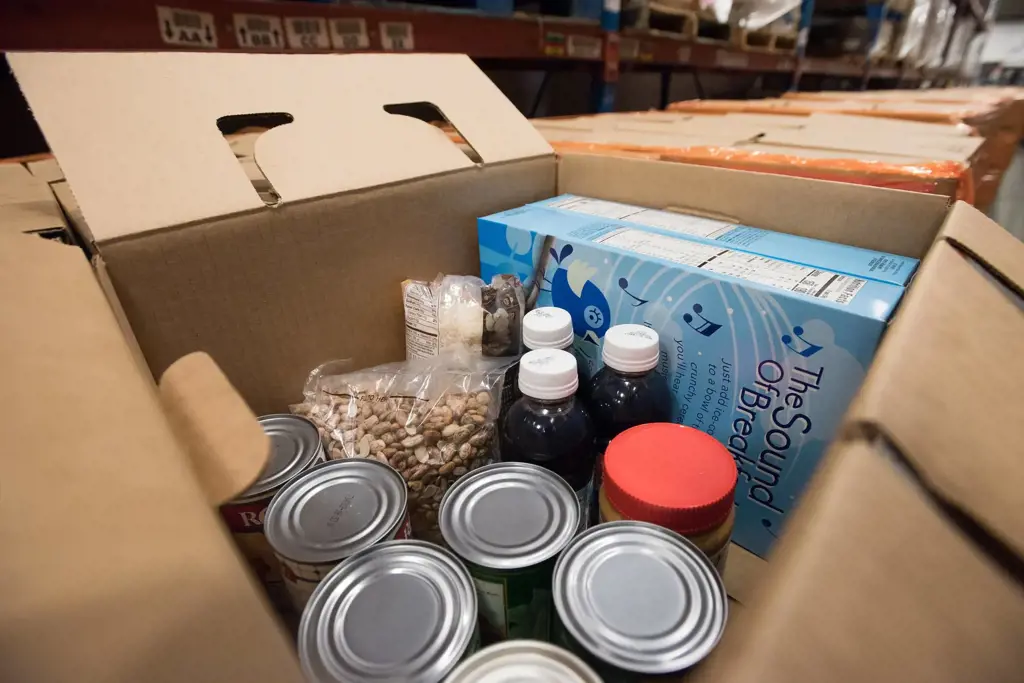
Packing your nutrition and hydration supplies properly in your Ironman bag is essential to ensure that you have everything you need to fuel your body for the long race. Following a systematic approach will help ensure that everything is organized and easily accessible during the race.
- Make a checklist: Before you start packing, create a checklist of all the nutrition and hydration supplies you plan to bring. This may include energy gels, electrolyte tablets, sports drinks, protein bars, and any other items you typically use during training or racing.
- Separate into categories: Sort your items into categories to keep things organized. For example, you can have separate sections for gels, bars, electrolytes, and hydration bladder accessories. This will make it easier to find what you need during the race.
- Use resealable bags: Place your gels, bars, and other small items in resealable bags to keep them together and prevent any spills or leaks. This will also make it easier to find what you need quickly during the race.
- Pack strategically: When packing your bag, consider the order in which you will need your supplies during the race. Start by placing your hydration bladder and/or bottles in the designated compartments. Next, pack your electrolyte tablets and other small accessories in easily accessible pockets.
- Test your bag: Before race day, test out your bag setup during a long training session. This will give you an opportunity to see if everything is easily accessible and if there are any adjustments you need to make. It's better to make any changes in advance rather than during the race.
- Consider your race plan: Think about your race plan and how often you'll need to access your nutrition and hydration supplies. If you plan on consuming a gel every hour, for example, make sure you have quick and easy access to them without having to dig through your entire bag.
- Don't forget extras: In addition to your primary nutrition and hydration supplies, don't forget to pack extras. This includes extra gels, bars, electrolyte tablets, and any other items you may need in case of unexpected circumstances during the race.
- Keep it lightweight: Remember that you'll be carrying your bag throughout the entire race, so it's important to keep it as lightweight as possible. Only pack the essentials and avoid unnecessary items that will add unnecessary weight.
- Practice transition setups: Ironman races require efficient transitions between disciplines. During your training, practice setting up your nutrition and hydration supplies in your transition area so that you can quickly grab what you need and continue with the race.
- Adapt as needed: Each Ironman race is unique, so it's important to adapt your nutrition and hydration setup based on the specific course conditions and your personal preferences. Don't be afraid to experiment and make changes to your setup to optimize your performance.
In conclusion, packing your nutrition and hydration supplies in your Ironman bag requires careful planning and organization. By following a systematic approach, testing your setup, and considering your race plan, you can ensure that you have everything you need to fuel your body for success on race day.
Essential Summer Camp Packing List for Teenage Girls: A Guide to Adventure and Fun
You may want to see also

Are there any specific clothing items or gear that I should include in my Ironman bag?
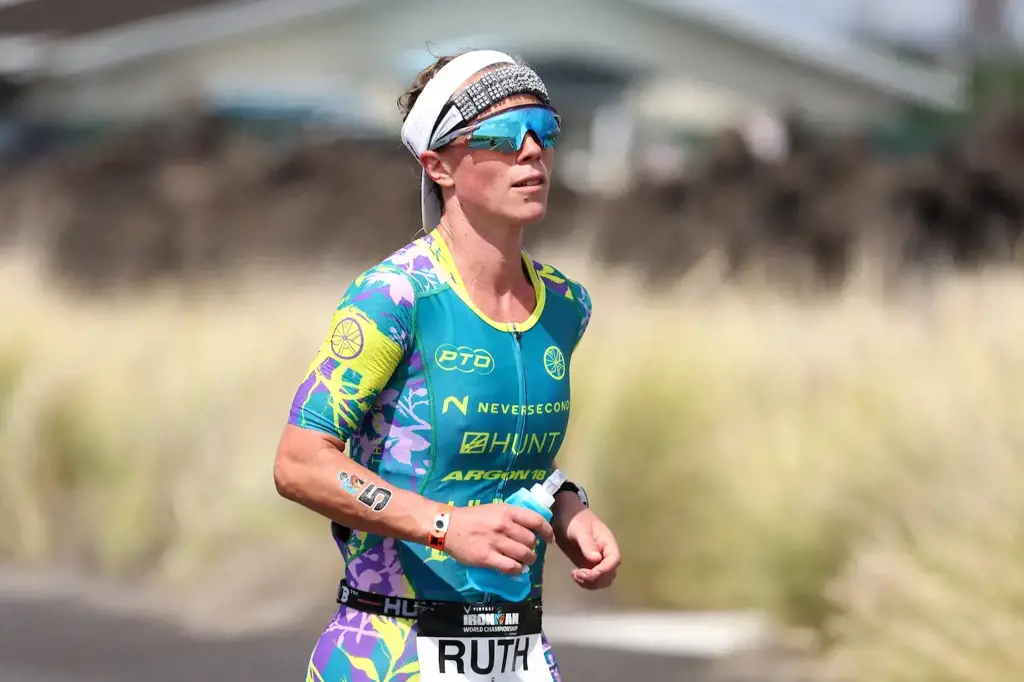
When it comes to preparing for an Ironman triathlon, having the right clothing and gear is essential. Here are some of the specific items you should consider including in your Ironman bag to ensure you have everything you need for a successful race.
- Triathlon Suit: A triathlon suit is a one-piece garment that combines a snug-fitting top and shorts. This is a versatile piece of clothing that can be worn throughout the entire race, providing comfort and reducing the need for multiple outfit changes. Look for a suit made of quick-drying and breathable fabric.
- Wetsuit: If the race includes a swim portion, a wetsuit is a must-have item. A good quality wetsuit will provide buoyancy and insulation, helping you swim faster and stay warm in colder water temperatures. Make sure the wetsuit fits properly and allows for a full range of motion.
- Swim Cap and Goggles: These are essential for the swim portion of the race. A swim cap helps keep your hair out of your face and improves visibility in the water. Choose a cap that is made of durable and comfortable material. Goggles should fit snugly and provide a clear field of vision.
- Cycling Gear: For the bike leg of the race, a well-fitting helmet is a non-negotiable item. Look for a helmet that meets safety standards and has good ventilation. Cycling shoes with cleats are also recommended to maximize power transfer to the pedals. Don't forget to bring socks to prevent blisters.
- Running Shoes: Invest in a quality pair of running shoes that provide good support and cushioning. It is important to choose a pair that suits your running style and provides a comfortable fit. Consider getting a gait analysis from a professional to determine the right type of shoe for you.
- Socks and Compression Gear: Socks are a small but important item to include in your bag. Look for moisture-wicking and cushioned socks to help prevent blisters. Compression gear, such as calf sleeves or compression socks, can also aid in circulation and muscle recovery during and after the race.
- Nutrition and Hydration: Don't forget to pack fuel and hydration products for the race. Include energy gels, electrolyte tablets, and water bottles in your bag. It's important to practice using these products during training to ensure they work well for you on race day.
- Weather-specific Gear: Check the weather forecast for race day and pack accordingly. If it's going to be hot and sunny, bring a hat, sunglasses, and sunscreen. If there's a chance of rain, pack a lightweight waterproof jacket. Be prepared for all weather conditions to ensure you stay comfortable throughout the race.
Remember, it's important to test and train with your equipment before race day. Practice swimming in your wetsuit, cycling in your gear, and running in your shoes to ensure everything fits well and feels comfortable. By including these specific clothing items and gear in your Ironman bag, you'll be well-prepared for the challenges of the race and increase your chances of a successful finish.
Essential Gear for a Memorable Trip to Big Bear: What to Pack
You may want to see also

What should I include in a first aid kit for an Ironman race?
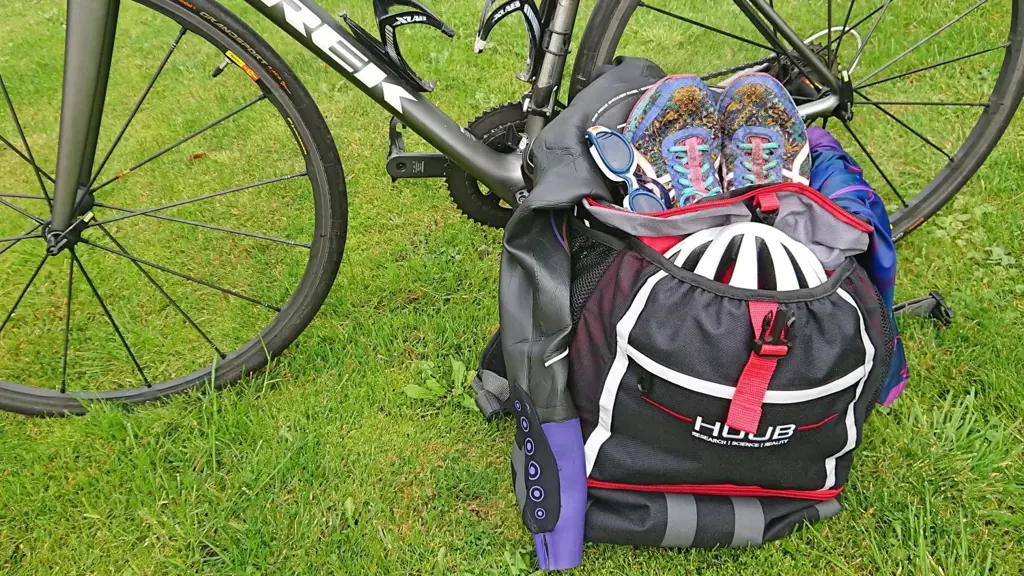
Ironman races are some of the most grueling endurance events in the world, pushing athletes to their physical and mental limits. With the combination of swimming, biking, and running over long distances, it's important for athletes to be prepared for any injuries or medical emergencies that may arise during the race. Having a well-stocked first aid kit is crucial to ensure prompt and proper treatment.
When assembling a first aid kit for an Ironman race, it's important to consider the specific types of injuries that may occur during the race and the environmental conditions that the athletes will be exposed to.
- Basic supplies: Start with the basics such as adhesive bandages, gauze pads, adhesive tape, and scissors. These items will come in handy for minor cuts, scrapes, and blisters that may occur during the race.
- Wound care: Include antiseptic wipes or solution to clean wounds and prevent infection. Antibiotic ointment can also be helpful for treating cuts and scrapes.
- Blister care: Blisters are a common occurrence in endurance events like an Ironman race. Including moleskin or blister cushions in the first aid kit will provide relief and help prevent further irritation.
- Compression wraps: Athletes may experience muscle strains or sprains during the race. Having compression wraps or elastic bandages in the first aid kit can help support injured joints and reduce swelling.
- Pain relief: Include over-the-counter pain relievers such as ibuprofen or acetaminophen to help athletes manage pain during the race. It's important to note that athletes should always check with their healthcare provider before taking any medication during a race.
- Sun protection: Ironman races often take place in sunny locations, so it's important to include sunscreen with a high SPF, lip balm with SPF, and a hat or visor to protect the athletes from the sun's harmful rays.
- Electrolyte replacement: Dehydration is a common concern during endurance events. Including electrolyte replacement tablets or powder in the first aid kit can help athletes replenish essential minerals lost through sweat.
- Instant cold packs: These can be useful for treating minor sprains or strains by reducing swelling and providing pain relief.
- Emergency contact information: It's important to have a list of emergency contact information, including the race organizer's contact details and local emergency services, in the first aid kit.
- Personalized medications: If athletes have any specific medical conditions and require medications, they should include their prescribed medications in their first aid kit. It's also important to ensure that the medications are not expired.
- Instruction manual: Including a basic first aid instruction manual can be helpful for athletes who may not be familiar with how to treat certain injuries or medical emergencies.
Remember, it's not enough to just have a well-stocked first aid kit. Athletes should also familiarize themselves with the contents of their kit and how to use them properly. Training in basic first aid and CPR is also recommended for athletes participating in Ironman races.
In conclusion, a well-stocked first aid kit is essential for any athlete participating in an Ironman race. Including basic supplies, wound care items, blister care products, compression wraps, pain relievers, sun protection, electrolyte replacement, instant cold packs, emergency contact information, personalized medications, and an instruction manual will ensure athletes are prepared to handle any injuries or medical emergencies that may arise during the race. By being prepared, athletes can focus on giving their best performance and enjoying the competition.
Essential Items to Pack in Your Preschooler's Backpack
You may want to see also

Are there any additional items or tips for packing an Ironman bag that could be helpful for race day preparation?
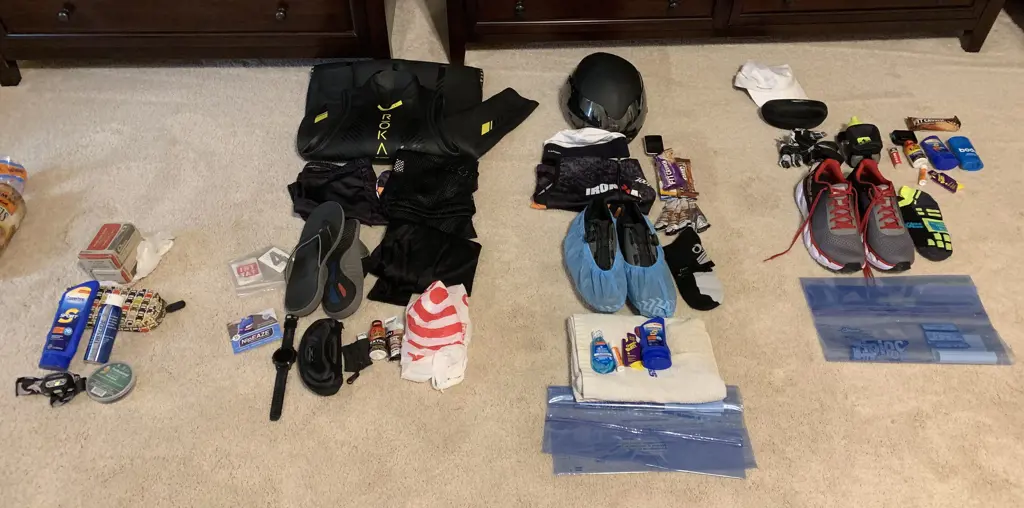
Preparing for an Ironman race can be a daunting task, and packing your race day bag is an important part of your preparation. In addition to the essential items like your race kit, nutrition, and hydration, there are a few additional items and tips that can be helpful for race day.
- Spare Clothing: It's always a good idea to pack extra clothing in case of unexpected weather changes or any mishaps during the race. Pack an extra pair of socks, running shorts, and a lightweight jacket, which can save you from getting cold or uncomfortable during the race.
- Body Glide or Anti-Chafing Cream: Chafing can be a common problem during long races, especially in areas where there is constant friction, such as underarms, thighs, and nipples. Apply a generous amount of body glide or anti-chafing cream to these areas before the race to prevent chafing and discomfort.
- Sunscreen: Protecting your skin from the sun's harmful rays is crucial during an Ironman race, as you'll be exposed to the sun for an extended period. Apply a high SPF sunscreen 30 minutes before the race and pack a small travel-sized bottle to reapply throughout the day.
- Warm-Up Bands or Tubing: Including warm-up bands or tubing in your race day bag can be beneficial for your warm-up routine before the race. These bands or tubing can help activate and warm up the muscles you'll be using, which can enhance your performance and reduce the risk of injury.
- Extra Elastic Bands: Elastic bands can come in handy for various purposes during an Ironman race. You can use them to secure your bike shoes to your bike during transition, attach your race number to your race belt, or even make a temporary repair if any part of your gear breaks.
- Emergency Blanket: It's always wise to pack an emergency blanket in your race day bag. This lightweight and compact blanket can be a lifesaver in case of unforeseen circumstances like getting stranded, waiting for medical assistance, or sudden changes in weather.
- Portable Charger: Your phone can be an invaluable tool on race day for communication, tracking your progress, or even as a source of motivation. To ensure your phone doesn't run out of juice during the race, pack a portable charger in your bag, so you can keep it charged up and accessible when needed.
- Plastic Bags: Packing a few heavy-duty plastic bags can be handy for multiple purposes. They can be used to separate wet or dirty clothing from the rest of your gear, keep your spare shoes clean, or protect any electronic devices from getting wet in case of rain.
- Towel and Baby Wipes: Having a small towel and a pack of baby wipes in your bag can help you freshen up after the race. They can be used to clean off sweat, dirt, or any other grime that accumulates during the race, making you feel more comfortable and refreshed.
- Cash and Identification: While most Ironman races provide ample support and aid stations, having some cash and identification on hand is always a good idea. You never know when you might need to buy some extra nutrition, take a taxi in case of injury, or prove your identity in certain situations.
In conclusion, packing your Ironman race day bag with these additional items can enhance your race day experience and prepare you for any unforeseen circumstances. By being prepared and organized, you can focus more on the race itself and achieve your goals with confidence.
Essential Items to Pack for Studying Abroad in Italy
You may want to see also
Frequently asked questions
When packing your Ironman bag for race day, it's important to include items such as a wetsuit, goggles, swim cap, bike helmet, bike gloves, running shoes, socks, nutrition and hydration supplies, spare tubes and tools for bike maintenance, sunscreen, a hat, sunglasses, a change of clothes, and any other personal items you may need.
To make sure everything fits in your Ironman bag, it's helpful to use packing cubes or compression bags to condense your clothing and gear. Roll your clothes instead of folding them to save space. Place smaller items in the compartments of your bag and use ziplock bags for items like socks and accessories. It's also important to prioritize the items you need during the race and pack them in a way that allows easy access during transitions.
There are a few items you should avoid packing in your Ironman bag. These include valuables, such as jewelry or expensive watches, as they may get lost or damaged during the race. Additionally, it's best to leave out non-essential items that may add unnecessary weight or take up space in your bag. Stick to the essentials and focus on packing items that will help you perform your best on race day.







